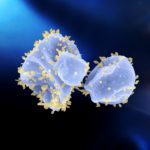Lien vers Pubmed [PMID] – 40825048
Lien DOI – 10.1371/journal.pgen.1011833
PLoS Genet 2025 Aug; 21(8): e1011833
Pangenome analyses, which encompass the full genetic repertoire of a species, offer valuable insights into intraspecific diversity and phylogeographic gene patterns. While the taxonomic breadth and functional significance of animal pangenomes remain to be fully uncovered, recent findings (such as reports of open, bacterial-like pangenomes in bivalves) highlight the need to better understand the molecular mechanisms driving inter-haplotype structural variation. Genes affected by presence-absence variation (PAV), along with non-reference sequences (NRSs), represent evolutionary footprints that may shape genome architecture and plasticity, ultimately influencing the adaptability and long-term fitness of species. To investigate the pangenomic architecture of basal chordates, we analyzed available whole-genome resequencing data from Branchiostoma belcheri and B. floridae, examined the impact of structural genomic variation, and assessed the inheritance patterns of dispensable genes across generations. The pangenomes of both species include over a thousand of genes affected by PAV and exhibiting trans-generational Mendelian transmission from parents to offspring. We further demonstrate that 35 dispensable genes in B. belcheri are of exogenous origin, likely resulting from the integration of a malacoherpesvirus genome, thereby extending the known host range of Malacoherpesviridae from invertebrates to chordates. PAV preferentially targeted gene families involved in defense, immunity, and cell signaling, including GTPases of immunity-associated proteins (GIMAPs), caspases, toll-like receptors, and pattern recognition receptors containing apextrin C-terminal (APEC) domains. The dynamic nature of immunity genes in cephalochordates parallels patterns seen in open bacterial pangenomes, suggesting that fundamental principles of genome evolution and innovation across life domains are shaped by host-pathogen interactions.

